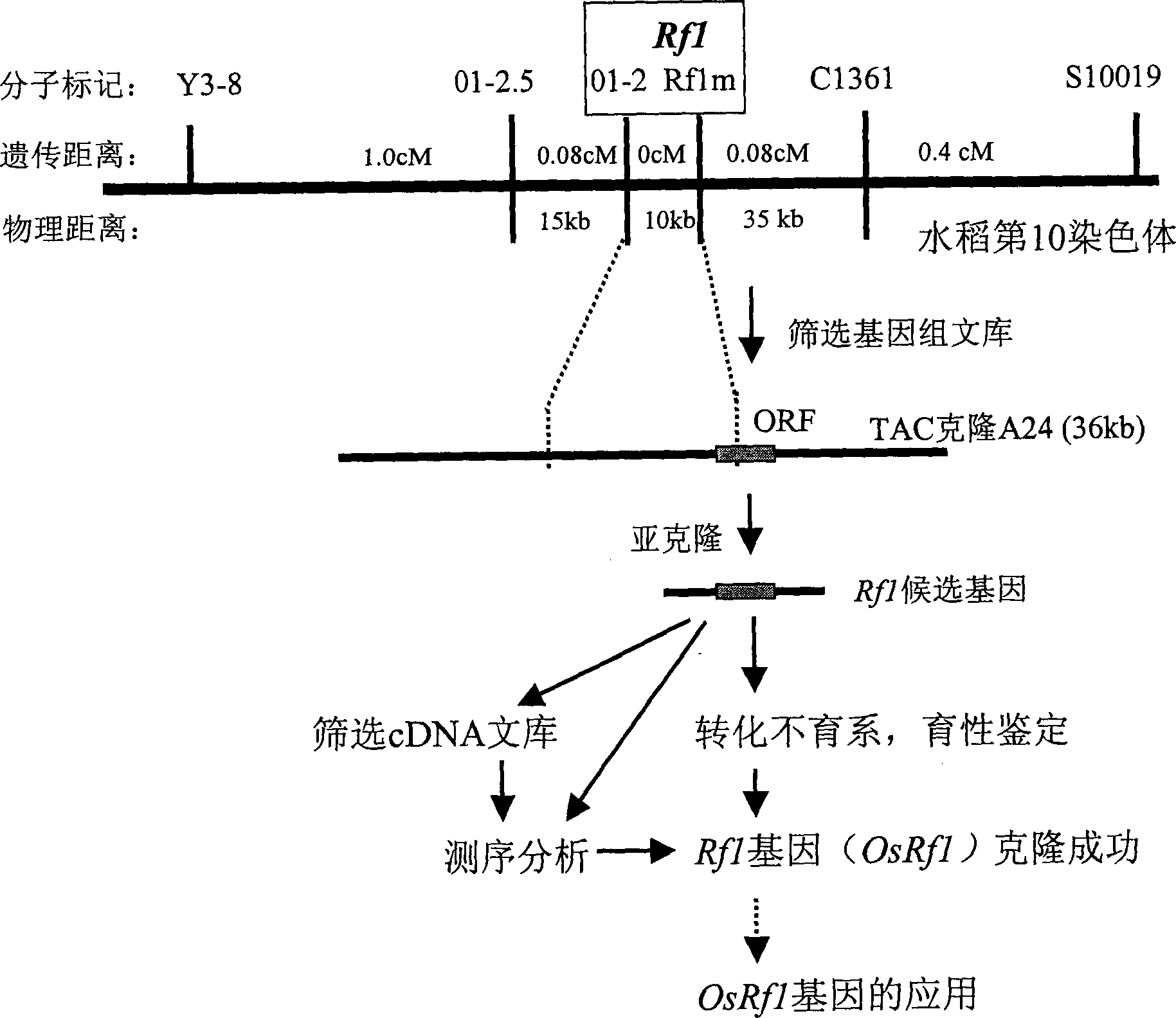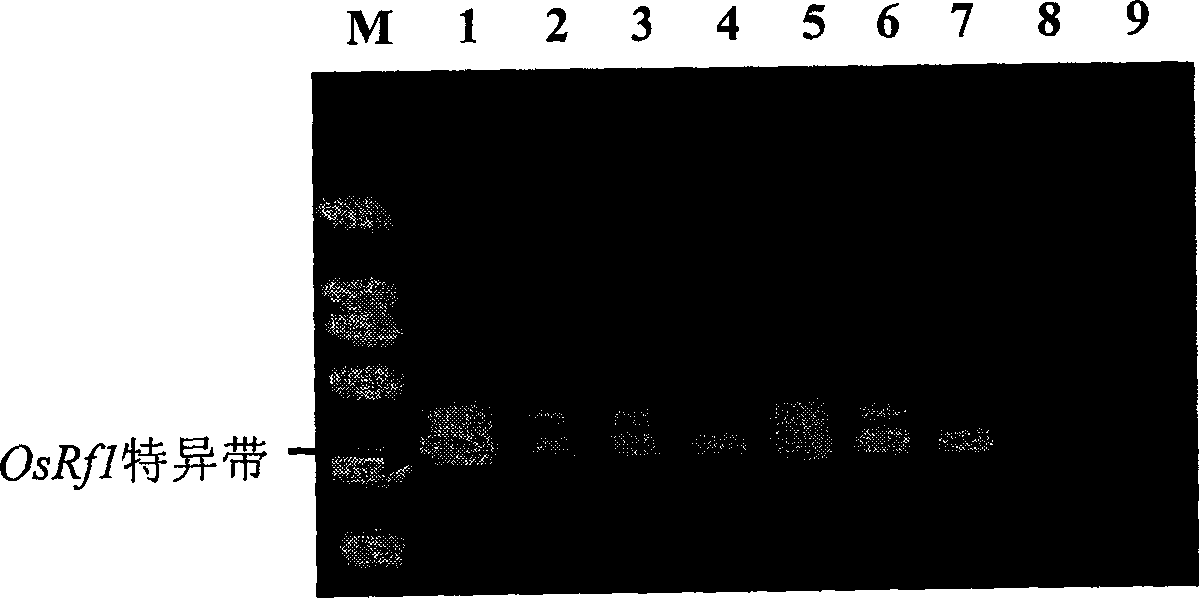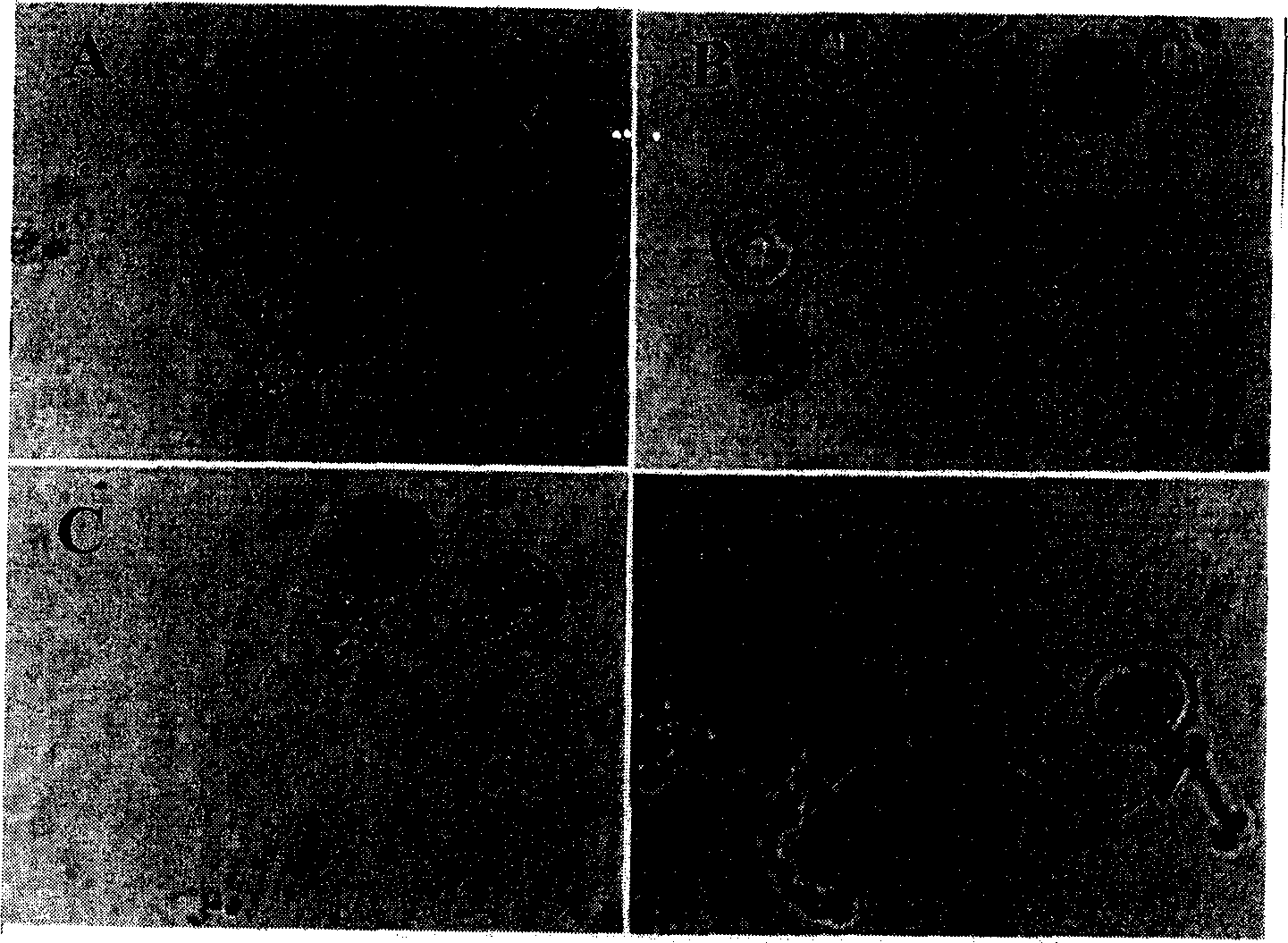Plant cytoplasmic male sterile recovering gene and its use
A male sterility and cytoplasmic technology, applied in the direction of plant gene improvement, application, plant peptides, etc., to shorten the breeding time and improve the efficiency of breeding selection
- Summary
- Abstract
- Description
- Claims
- Application Information
AI Technical Summary
Problems solved by technology
Method used
Image
Examples
Embodiment 1
[0038] Example 1. Fine mapping and cloning of rice restorer gene Rf1
[0039] In the present invention, the Rf1 gene is cloned by a map-based cloning method. First, the rice Baotai cytoplasmic male sterile line 731A was crossed with the restorer line C9083 to establish a F 2 Separate groups of individuals. According to the reported approximate position of the Rf1 locus on rice chromosome 10 (Ichikawa, 1997), molecular markers in this region were selected for polymorphism detection and linkage analysis. These markers include Y3-8 (Zhang Qunyu et al., 2002), C1361, S10019 (RGP Research Institute of Japan: http: / / rgp.dna.affrc.go.jp), and the BAC clone sequence OSJNBa0078O01 according to the data of the rice genome sequence database The polymorphic probes 01-2.5, 01-2, and Rf1m were amplified by PCR using the primers designed and synthesized at the position. Linkage analysis was performed with these markers, and a linkage map of the Rf1 locus region was constructed ( figure ...
PUM
 Login to View More
Login to View More Abstract
Description
Claims
Application Information
 Login to View More
Login to View More - R&D
- Intellectual Property
- Life Sciences
- Materials
- Tech Scout
- Unparalleled Data Quality
- Higher Quality Content
- 60% Fewer Hallucinations
Browse by: Latest US Patents, China's latest patents, Technical Efficacy Thesaurus, Application Domain, Technology Topic, Popular Technical Reports.
© 2025 PatSnap. All rights reserved.Legal|Privacy policy|Modern Slavery Act Transparency Statement|Sitemap|About US| Contact US: help@patsnap.com



